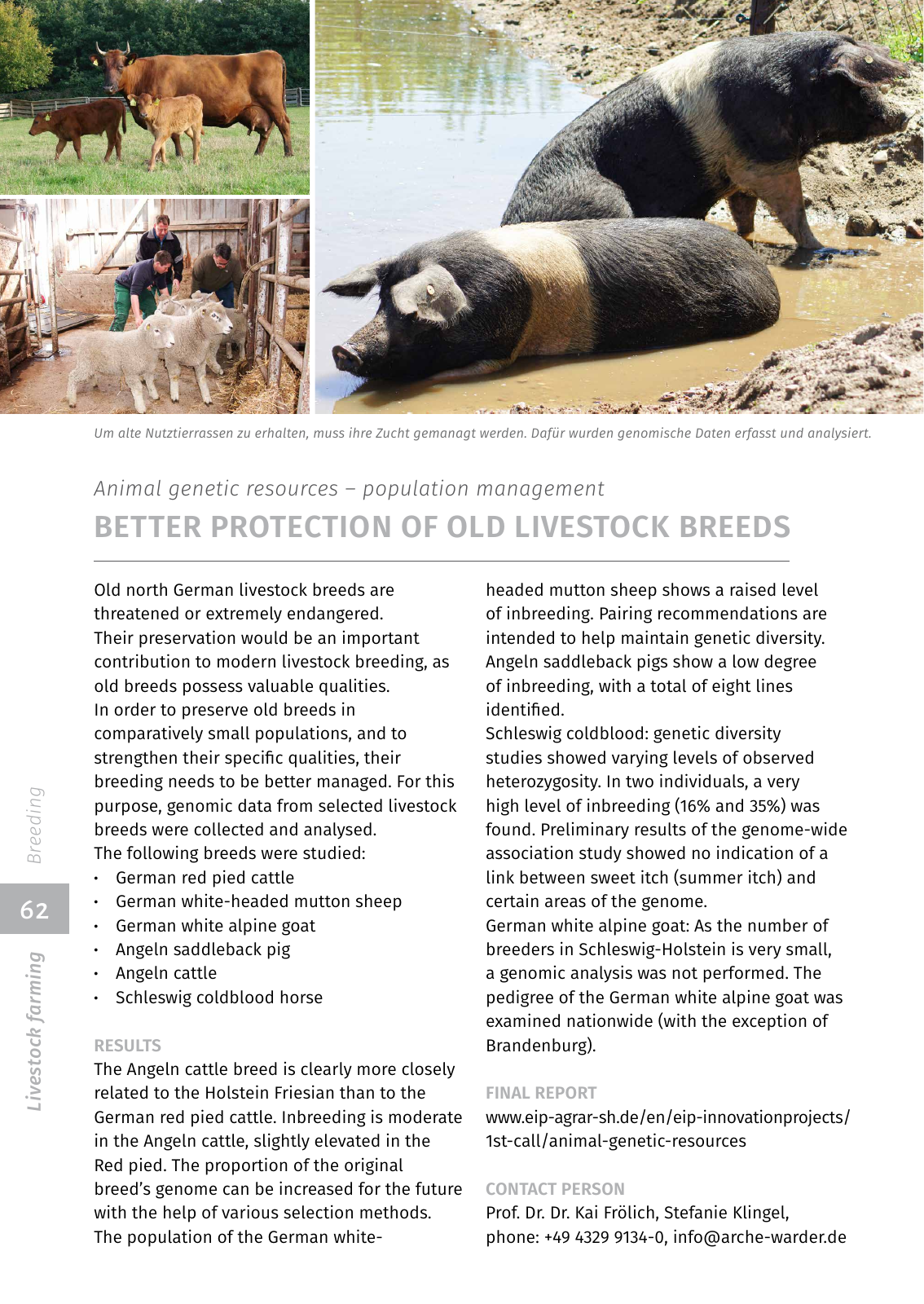Old north German livestock breeds are threatened or extremely endangered Their preservation would be an important contribution to modern livestock breeding as old breeds possess valuable qualities In order to preserve old breeds in comparatively small populations and to strengthen their specific qualities their breeding needs to be better managed For this purpose genomic data from selected livestock breeds were collected and analysed The following breeds were studied German red pied cattle German white headed mutton sheep German white alpine goat Angeln saddleback pig Angeln cattle Schleswig coldblood horse RESULTS The Angeln cattle breed is clearly more closely related to the Holstein Friesian than to the German red pied cattle Inbreeding is moderate in the Angeln cattle slightly elevated in the Red pied The proportion of the original breed s genome can be increased for the future with the help of various selection methods The population of the German white headed mutton sheep shows a raised level of inbreeding Pairing recommendations are intended to help maintain genetic diversity Angeln saddleback pigs show a low degree of inbreeding with a total of eight lines identified Schleswig coldblood genetic diversity studies showed varying levels of observed heterozygosity In two individuals a very high level of inbreeding 16 and 35 was found Preliminary results of the genome wide association study showed no indication of a link between sweet itch summer itch and certain areas of the genome German white alpine goat As the number of breeders in Schleswig Holstein is very small a genomic analysis was not performed The pedigree of the German white alpine goat was examined nationwide with the exception of Brandenburg FINAL REPORT www eip agrar sh de en eip innovationprojects 1st call animal genetic resources CONTACT PERSON Prof Dr Dr Kai Frölich Stefanie Klingel phone 49 4329 9134 0 info arche warder de BETTER PROTECTION OF OLD LIVESTOCK BREEDS Animal genetic resources population management Um alte Nutztierrassen zu erhalten muss ihre Zucht gemanagt werden Dafür wurden genomische Daten erfasst und analysiert Li ve st oc k fa rm in g B re ed in g 62

Hinweis: Dies ist eine maschinenlesbare No-Flash Ansicht.
Klicken Sie hier um zur Online-Version zu gelangen.
Klicken Sie hier um zur Online-Version zu gelangen.